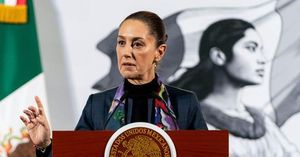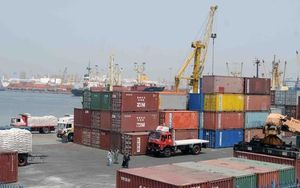The NHL is set to experience significant salary cap increases over the next three seasons, marking a remarkable transition for teams and players alike. The National Hockey League (NHL) and the NHL Players' Association (NHLPA) reached an agreement to raise the salary cap's upper limit through the 2027-28 season.
According to recent announcements, the salary cap will rise from $88 million this season to $95.5 million for the 2025-26 season. It will continue on this upward trend, peaking at $104 million for 2026-27 and reaching $113.5 million by the 2027-28 season. This increment can be viewed as both exciting and necessary, particularly as the league recovers from the financial strains imposed by the COVID-19 pandemic.
Each year, the increases reflect substantial jumps: $7.5 million between the 2024-25 and 2025-26 seasons, $8.5 million the next year, and $9.5 million thereafter. Interestingly, these amounts indicate the most considerable year-over-year increases seen since the cap’s inception.
Confirming the significance of the new projections, hockey insider Frank Seravalli noted, "This isn't merely a projection of cap increases, but an agreement between both the NHL and NHLPA." This established framework allows for both teams and players to plan more strategically for the coming years.
The cap ceiling's growth is impressive when one considers the stagnation of the past few years. The salary cap had remained flat due to the COVID-19 pandemic, which saw revenues drop and forced the league to impose restrictions on team spending. The cap had only seen slight adjustments during those years, going from $81.5 million to $83.5 million over the past several seasons.
Now things are changing rapidly. With this increase, teams will have more flexibility to negotiate contracts with key players. The new numbers could heavily influence upcoming contract talks, particularly with pending unrestricted free agents (UFAS) like Mitch Marner from the Toronto Maple Leafs and Mikko Rantanen from the Carolina Hurricanes, who are both expected to seek substantial raises as they prepare to hit the open market.
Notably, significant contracts will also emerge as stars like Connor McDavid and Leon Draisaitl navigate their own contract negotiations. According to analysts, McDavid’s current cap hit stands at $12.5 million, and he will be among the highest-paid players when he becomes eligible for renewal. The expected increases will amplify the stakes as players and their agents need to find the right balance to negotiate deals reflective of the growling cap space.
Interestingly, as the cap climbs, the minimum salary required for teams will also increase substantially, moving from $65 million this season to $70.6 million in 2025-26, $76.9 million the following year, and hitting $83.9 million by the 2027-28 season. With this new agreement, the NHL and NHLPA are signaling their recovery plan for the league's financial future.
For fans and analysts, these projections are not just dry numbers; they indicate the direction of the league moving forward. This cap increase can potentially lead to more competitive rosters across the board, with teams now able to make more sound investments. The impending negotiations will also provide teams with opportunities to lock down their cores for the future.
These changes signal the dawn of a new era for the NHL post-pandemic, reminiscent of the league's growth when it first introduced free agency. The last time the cap saw significant improvements, it moved from $75 million to $79.5 million between the 2017-18 and 2018-19 seasons.
With the current underpinnings of player contracts consistently rising alongside the revenue share, players can expect to continue making well-deserved earnings reflective of their contributions and market values.
Moving forward, it will be fascinating to see how teams react to these salary cap increases and adjustments as they forge their strategies and approaches for the coming years. Whether teams choose bold moves or cautious investments, the cap increases are sure to impact the NHL's competitive balance.
Overall, the agreement not only restores faith among teams and fans but also emphasizes the NHL's long-term growth strategy after difficult years wrought by the pandemic. Top free agents can now enter negotiations armed with the beneficial foresight of cap growth, potentially reshaping the dynamics of roster-building across the league.



